Search
Did you mean: Justinian I?
Search Results
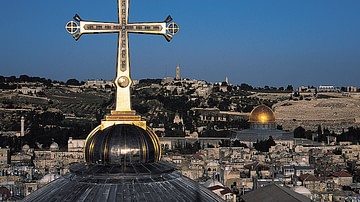
Article
Pilgrimage in the Byzantine Empire
Pilgrimage in the Byzantine Empire involved the Christian faithful travelling often huge distances to visit such holy sites as Jerusalem or to see in person relics of holy figures and miraculous icons on show from Thessaloniki to Antioch...
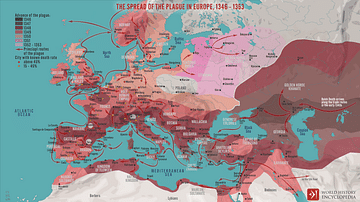
Image
The Spread of the Plague in Europe, 1346 - 1353
A map illustrating the rapid spread of the 14th-century plague pandemic commonly known as the "Black Death", across Europe and the Middle East. The second such pandemic (after the 541 - 549 outbreak during the reign of the Roman emperor Justinian...
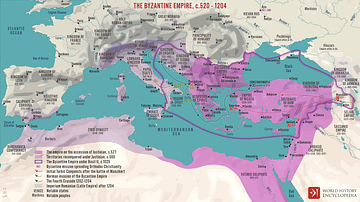
Image
The Byzantine Empire, c.520 - 1204
A map illustrating the Byzantine Empire (the Greek-speaking eastern half of the Roman Empire with Constantinople as its capital) from the ascension of Justinian I in 527, through the reign of Basil II until the sacking of Constantinople by...
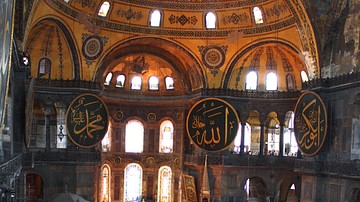
Image
Hagia Sophia Interior
The interior of the Hagia Sophia, Istanbul. It was built in 532-537 CE during the reign of Justinian I on the site of two more modest versions dating back to the 4th century CE.
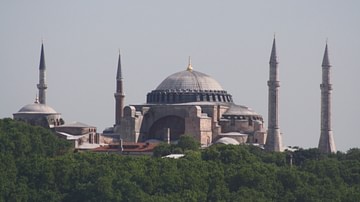
Image
Hagia Sophia Panorama
The former cathedral and mosque Hagia Sophia, Istanbul (formerly Constantinople). Although some historians disagree (claiming Constantine laid the foundation), Constantius II is credited with building the first of three Hagia Sophias, the...
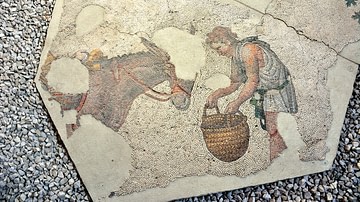
Image
Man Feeding Mule, Byzantine Mosaic
A man is feeding his mule, Byzantine Mosaic, Period: Early Byzantine, circa: 6th century CE. Place: Constantinople, (Modern Istanbul, Turkey). Great Palace Mosaic Museum, Istanbul, Turkey. The Great Palace Mosaic Museum was inaugurated...
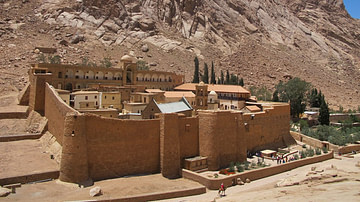
Image
St. Catherine's Monastery, Sinai
St. Catherine's monastery, Mount Sinai, Egypt. It was founded by Justinian I in the mid-6th century CE.
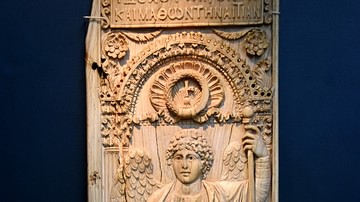
Image
Byzantine Ivory Diptych Panel
This is one of the largest surviving ivories from the Byzantine Empire. It comes from a hinged 2-leaf diptych, possibly used as a writing table. It shows an archangel holding an orb and sceptre. The style of his drapery is classical, but...
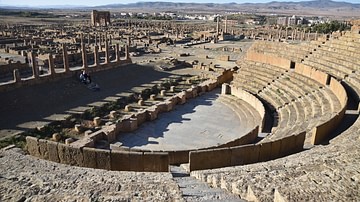
Image
Roman Theatre of Timgad
The Roman theatre of Thamugadi (modern-day Timgad in Algeria) was cut into the side of a small hill south of the forum. It was designed to hold up to 4,000 spectators. A dedication dates the building to the reigns of Marcus Aurelius and Lucius...
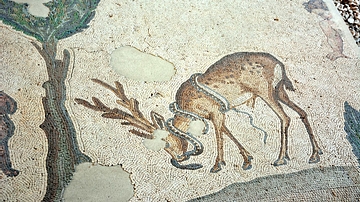
Image
Stag & Snake, Byzantine Mosaic
The stag and the snake mosaic: In some ancient texts, the stag is seen as a rival to the snake. It can also draw a snake out of its hole with its breath. The deer was a symbol of fertility and the animal of Artemis. The stag is illustrated...